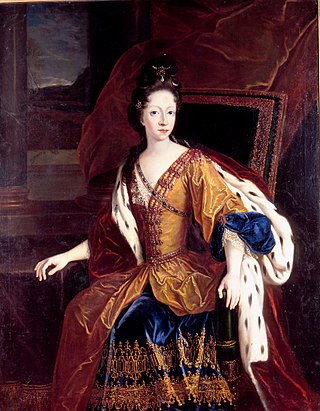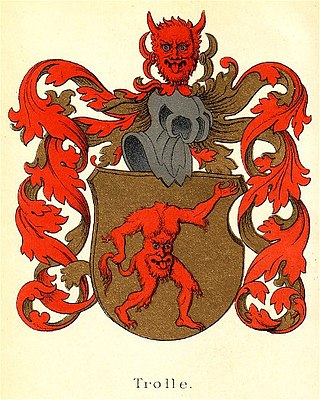Karen Andersdatter was the Danish mistress of King Christian IV of Denmark-Norway and the mother of one of his three illegitimate but acknowledged children, Hans Ulrik Gyldenløve.

Johan Georg Forchhammer was a Danish mineralogist and geologist.

Princess Sophia Hedwig of Denmark and Norway was a Danish princess, the daughter of King Christian V and his queen-consort, Charlotte Amalie of Hesse-Kassel.

Ove Rode was a Danish politician, writer, newspaper editor, and Minister of Interior Affairs for Det Radikale Venstre.
Brita Olovsdotter Tott or Birgitte Olufsdatter Thott, was a Danish and Swedish noble, landowner and royal county administrator She was judged for treason and for the forgery of seals. She was one of the biggest landowners in Scandinavia, and her estates played a role in politics in Sweden and Denmark.

Princess Anna Sophie of Denmark and Norway was the eldest daughter of King Frederick III of Denmark and Sophie Amalie of Brunswick-Lüneburg, and Electress of Saxony from 1680 to 1691 as the wife of John George III.

Peder Hansen Resen was a Danish historian, legal scholar and president of Copenhagen. He lived in what was then Denmark–Norway.
Edele Jernskjæg was a Danish noble, courtier and the royal mistress of King John I of Denmark.

Anne Meinstrup (1475–1535) was a politically active Danish noblewoman, lady-in-waiting and county administrator.

The Ordre de l'Union Parfaite was created by Queen consort Sophie Magdalene of Denmark and Norway on 7 August 1732 to celebrate the tenth anniversary of her happy marriage with King Christian VI of Denmark and Norway. It was given to both men and women. Its motto was In felicissimæ Unionis Memoriam.

Sophie Lykke was a Danish county administrator, landholder and noble.

Maria Charlotta Westberg, was a Swedish ballerina.
Richardis of Schwerin, also called Richardis of Lauenburg or Rixa,, was a Duchess consort of Schleswig and possibly a Danish queen consort, married to Valdemar III of Denmark. She was the daughter of Gunzelin VI, Count of Schwerin-Wittenburg and Richardis of Tecklenburg. She was the aunt of Richardis of Schwerin, Queen of Sweden.

Margrethe Marie Thomasine Numsen (née Ingenhaef(f); 8 March 1705 - 8 October 1776), was a politically active Danish courtier.

Ingeborg Christiane Rosenörn (1784-1859) was a Danish courtier and philanthropist; Overhofmesterinde to the Danish queen, Caroline Amalie of Augustenburg from 1845 to 1859.

Mette Trolle, was a Danish noblewoman, poet and Catholic convert, known for her unconventional life style.

Berte Skeel was a Danish noble, philanthropist and estate owner. She was the owner of Selsø Manor and co-founder of the Roskilde Adelige Jomfrukloster at Roskilde Kloster.

Anna Susanne von der Osten was a Danish courtier and philanthropist.

Holger Rosenkrantz was a Danish nobleman and member of the Danish Council of State. After a few years of joining the council, he chose to retire to his estates and pursue theological writing. European theologians in the 17th century considered him to be one of the wisest Danes and gave him the nickname the Learned.
Field marshal was the highest rank of the Royal Danish Army until its abolition in 1842.















